We tested the Favero Assioma PRO MX-2: the lightest power meter on the market is very versatile, durable, and boasts autonomy
The power meter is one of the most demanded components among enthusiasts who want to improve their performance. And those integrated in pedals are becoming increasingly popular for their versatility and lightness. In this sector, the Favero Assioma PRO MX-2 are the lightest power meters on the market and are one of the top choices for MTB and Gravel bikes. We have tested them for a while and we will tell you everything you need to know about them.
Pedals with power meter: what you need to know about them?
Before diving into the analysis of these Favero Assioma PRO MX-2 pedals, it is worth considering the pros and cons of choosing this type of power meters.
Starting with their advantages, the most notable one is the ability to use them on multiple different bikes by simply switching them from one crank to another. This means that whether you have more than one MTB or a gravel bike, you can have power data on both without needing to buy two power meters.
RECOMENDADO
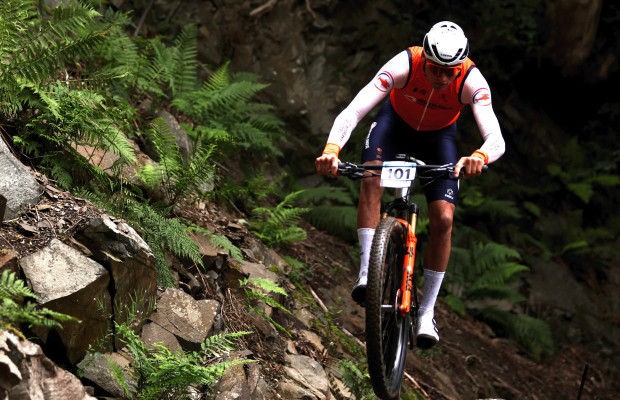
Some reasons to stay away from the road in winter
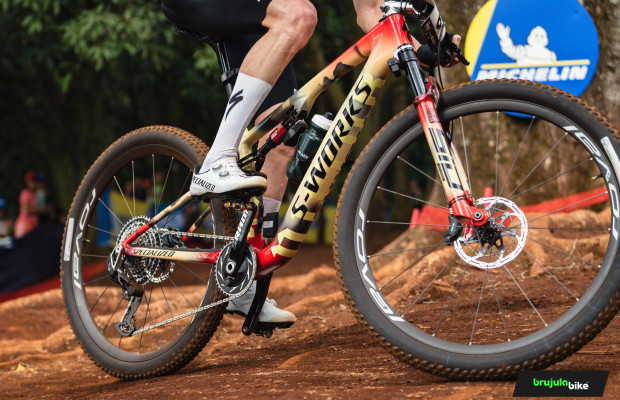
S-Works: what does it really mean and where does Specialized's most exclusive label come from?
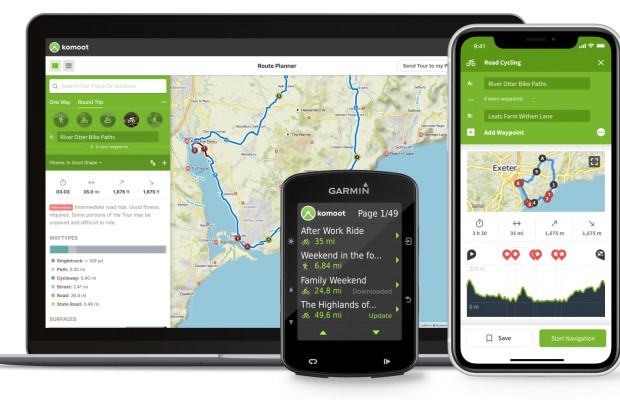
The best apps for cycling and mountain biking
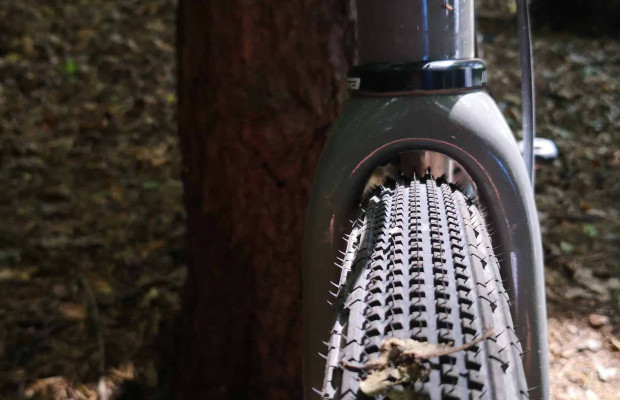
Why wider tires in gravel are faster
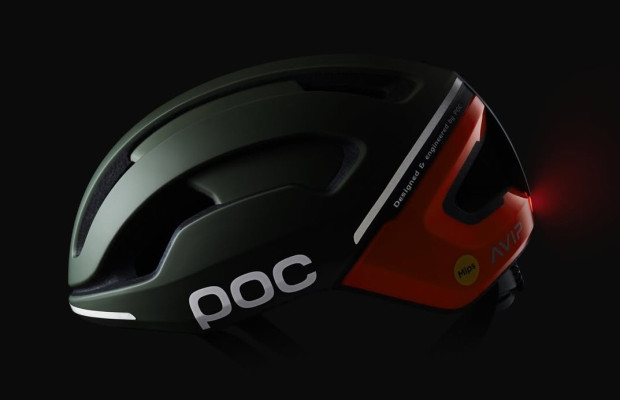
Black Friday 2025 cycling bargains: save on Garmin, POC, Maxxis and more
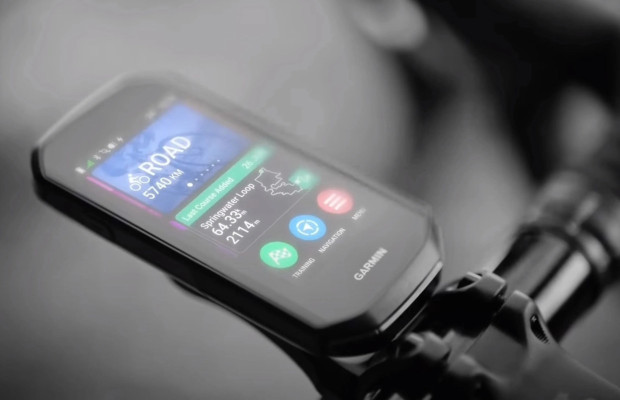
Black Friday Garmin 2025: the ultimate guide to choosing your GPS at the best price
Another advantage is in terms of compatibility, as spider, bottom bracket, or crank power meters are usually designed for a specific brand or model of transmission. With pedal power meters, we can use any groupset we want, and when we switch bikes, we are not limited by the components installed, as we only need to continue using our pedals.
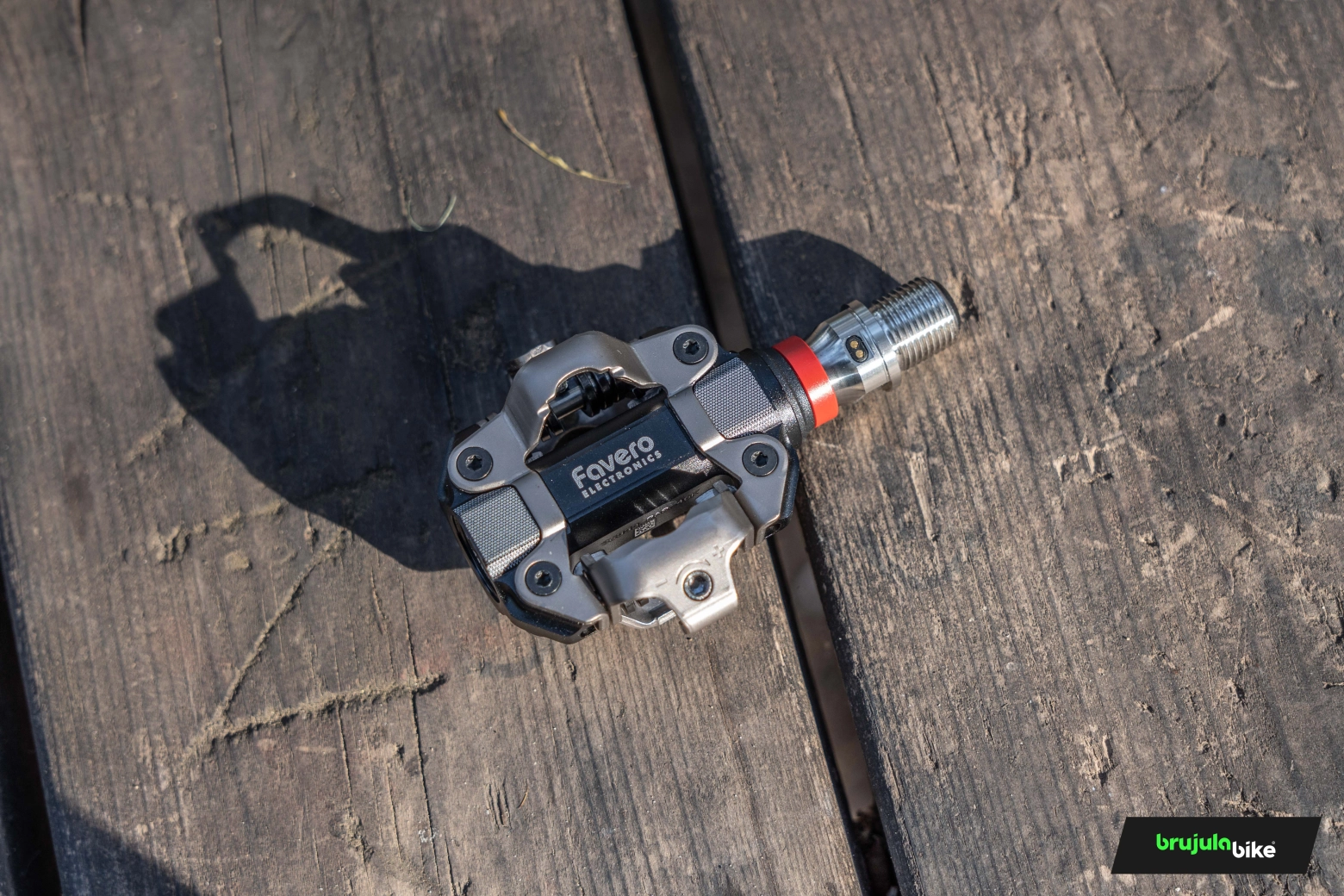
But there are some details that may make users of this type of power meters hesitate. One of them, especially in the case of the MTB version, is the possibility of hitting them when we hit rocks while pedaling. This is where the robustness and resistance of the pedal itself come into play, and the availability of spare parts, which, as we will see in the case of the Favero, is well resolved.
Another detail, which for the vast majority is of little importance, is the fact that, usually the pedal with a power meter will have a slightly higher height than a standard one, just a few millimeters that almost no one notices while riding, but there are very sensitive cyclists who will take this detail into account.
Favero Assioma PRO MX-2: the lightest power meter on the market, also very versatile, resistant, and boasts autonomy
Undoubtedly, when we talk about pedals with power meters, the greatest virtue that this system suggests is versatility. As we have mentioned, it doesn't matter what groupset you have on your bike or what type of bike it is.
In the case of the Favero Assioma PRO MX-2, we don't even have to worry about the cleats we have mounted, as long as they are SPD. In fact, it's not that they are compatible, but directly, the cleats included with the Favero are Shimano cleats.
Regarding the Q factor, the Favero pedals have a distance from the crank to the center of the cleat of 53mm. If we compare this with one of the most commonly used pedals, such as the Shimano XTR, these have 52mm in the short axle version and 55mm in the normal version.
There is a slight difference in the Stack, or the height from the center of the axle to the shoe support, although the Favero Assioma PRO MX-2 Pro have one of the lowest Stacks in their category with 11.2mm.
The weight factor is another detail to consider. And here the Favero Assioma PRO MX-2 have no rival as they are the lightest power meters on the market.
They announce a weight of 191.4 grams per pedal. We weighed our test pedals and they came in at 384 grams per pair. This implies an increase in weight of about 80 grams compared to XTR pedals, to continue with the comparison.
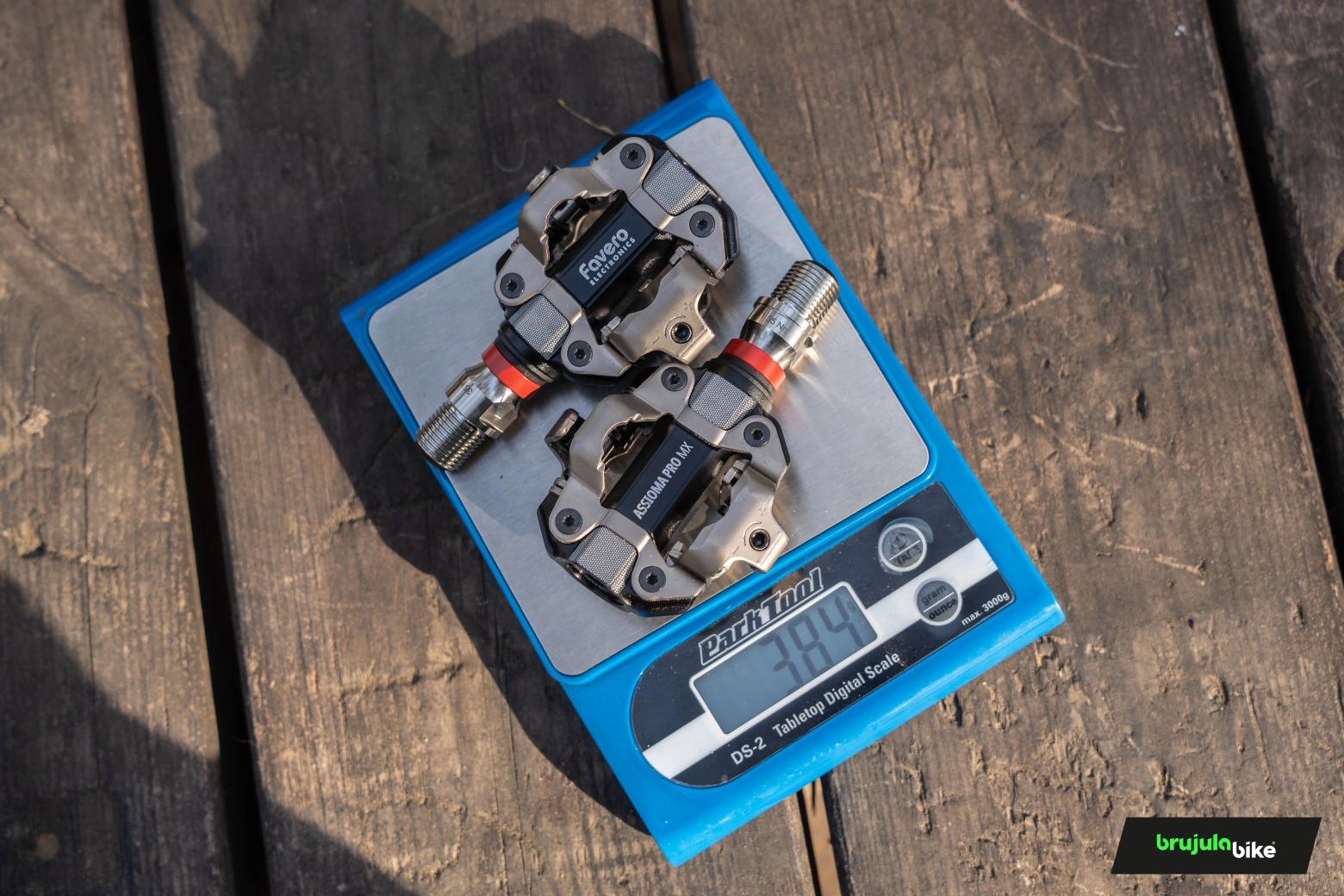
These pedals have the feature of housing all their electronics, including the battery, inside the axle, so it is completely protected, both from impacts and from water and mud. The Favero Assioma PRO MX-2 have an IP67 waterproof rating.
These pedals use an internal rechargeable battery. This avoids the need to manipulate the pedals every time the batteries need to be changed, and also the need to buy them. The disadvantage is that the battery life of power meters can be quite long, and the Favero battery announces a duration of 60 hours. Still, it is a generous duration that saves us from having to carry charging cables to a stage race, for example.
Setting up
The presentation of the Favero Assioma PRO MX-2 is in line with the product category. In the box, we find the pedals, cleats, the charging cable with adapters, tools for greasing, and several washers to use or not depending on the clearance between the frame and the crank.
The appearance of the pedals is really robust. The engagement mechanism clearly resembles a Shimano pedal, but we see a slightly larger shoe support surface.
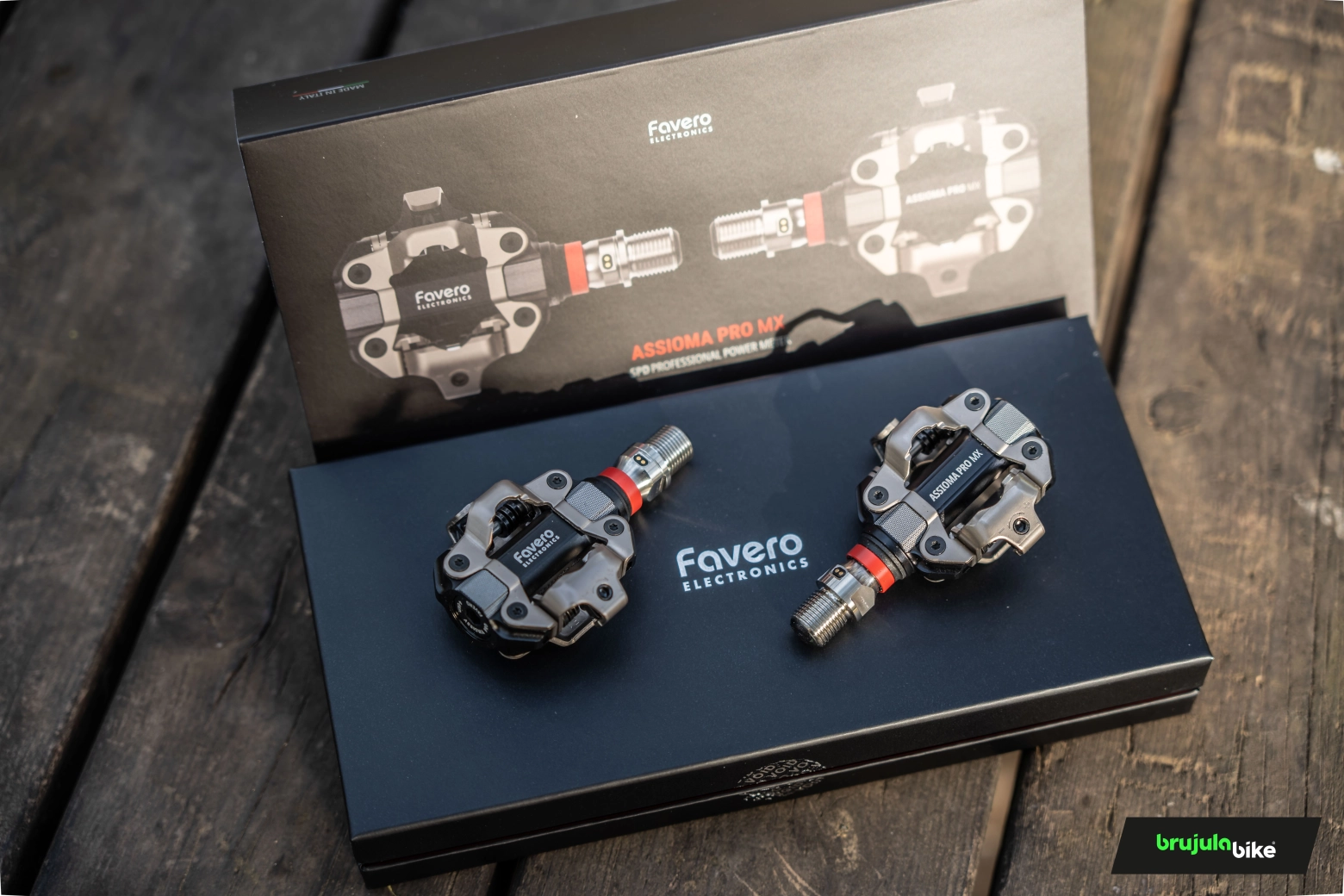
The only thing that may look different from a regular pedal are the pins that make contact for charging, which are located on the visible part of the axle, and on the inner face of the axle, where we would normally find the hexagon for mounting with an allen key, there is a black cover that lights up with a flashing red LED when the pedal is activated. Since there is no hexagon mentioned, we need a 15mm fixed wrench for mounting.
To set them up, we need to download the brand's app and follow some simple steps including an initial manual calibration.
An important detail is that we must indicate the length of our cranks, and if we change bikes and the length varies, we must remember to change it, something that can be done through the app or our bike computer.
The Favero pedals have ANT+ and Bluetooth connectivity and are compatible with most bike computers, smartwatches, and training apps.
In our tests, we used a Garmin and, despite Garmin having its own power meter pedals, this does not imply any limitation in the data it provides us with the Favero.
On the road
After the setup and calibration, we started our tests. To begin with, we will talk about the non-electronic part, that is, the feel of engagement and disengagement, angular freedom, and more.
We are used to using different types of pedals, but perhaps the pedals we pedal the most hours with are the XTR, and we can say that these Favero offer a very similar sharpness sensation, and even the larger support platform can be positively perceived depending on the shoe we use.
The angular freedom is also generous, and we have hardness adjustment to set it to our liking.
Regarding data measurement, we have seen a stable measurement at all times, without abnormal spikes or drops. Not even when we reviewed the data later. We did some routes using it together with a Quarq spider power meter, and the measurement of the latter had more pronounced oscillations.
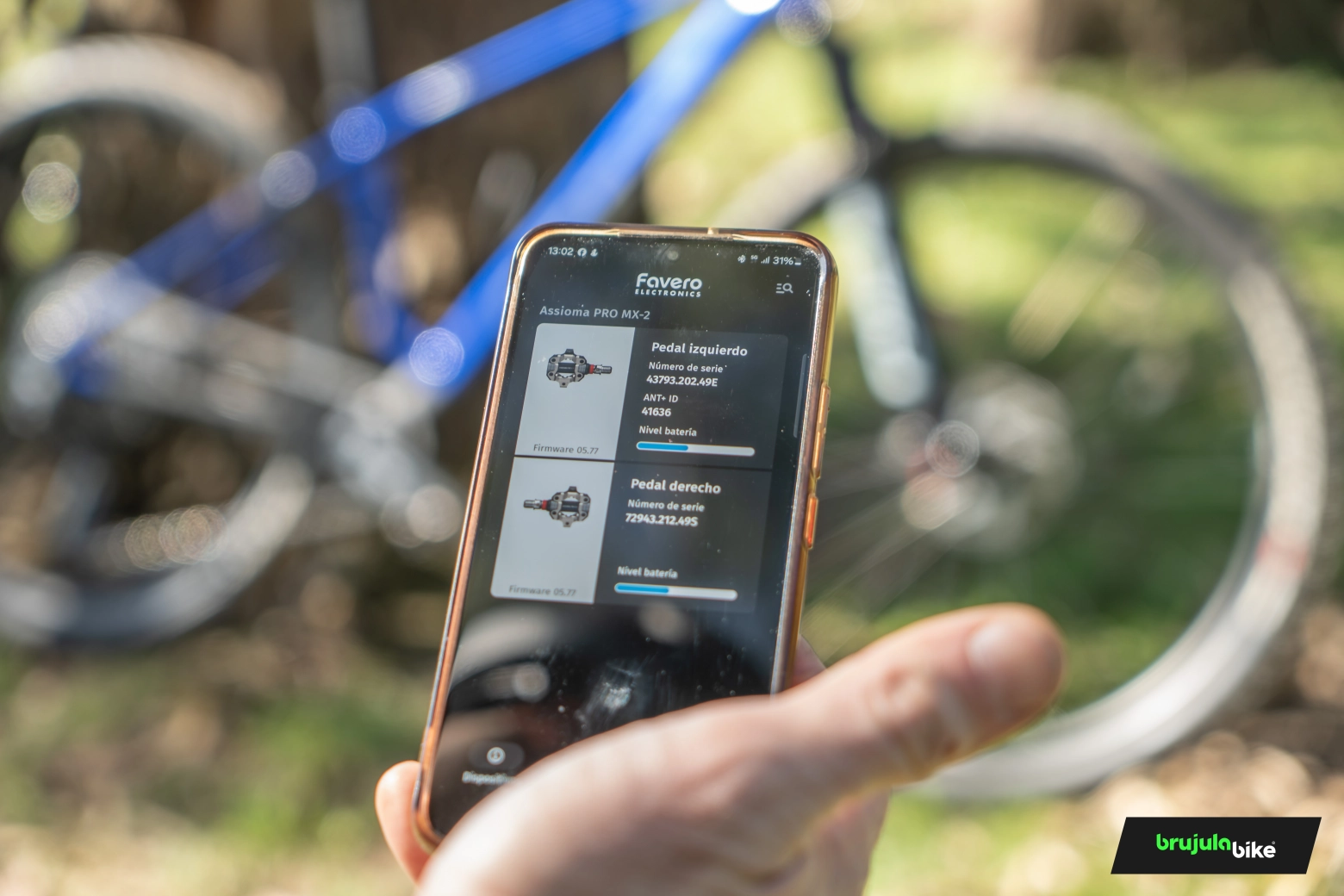
On the computer screen, we can visualize the data we choose from a multitude of them, and we can even select a screen with pedaling dynamics, although we don't find this as useful to see while riding as for later analysis in the application.
After each ride, we can review the data recorded by the Favero.
As we mentioned, despite using a Garmin computer, it records all the variables of the Favero and we can review them in the Garmin Connect app.
We have common data such as average power, maximum power, normalized power, cadence, right/left balance, and the corresponding graphs. In the case of the Assioma PRO MX-2, since it has a meter on both pedals, the balance is a real measurement, not an estimation.
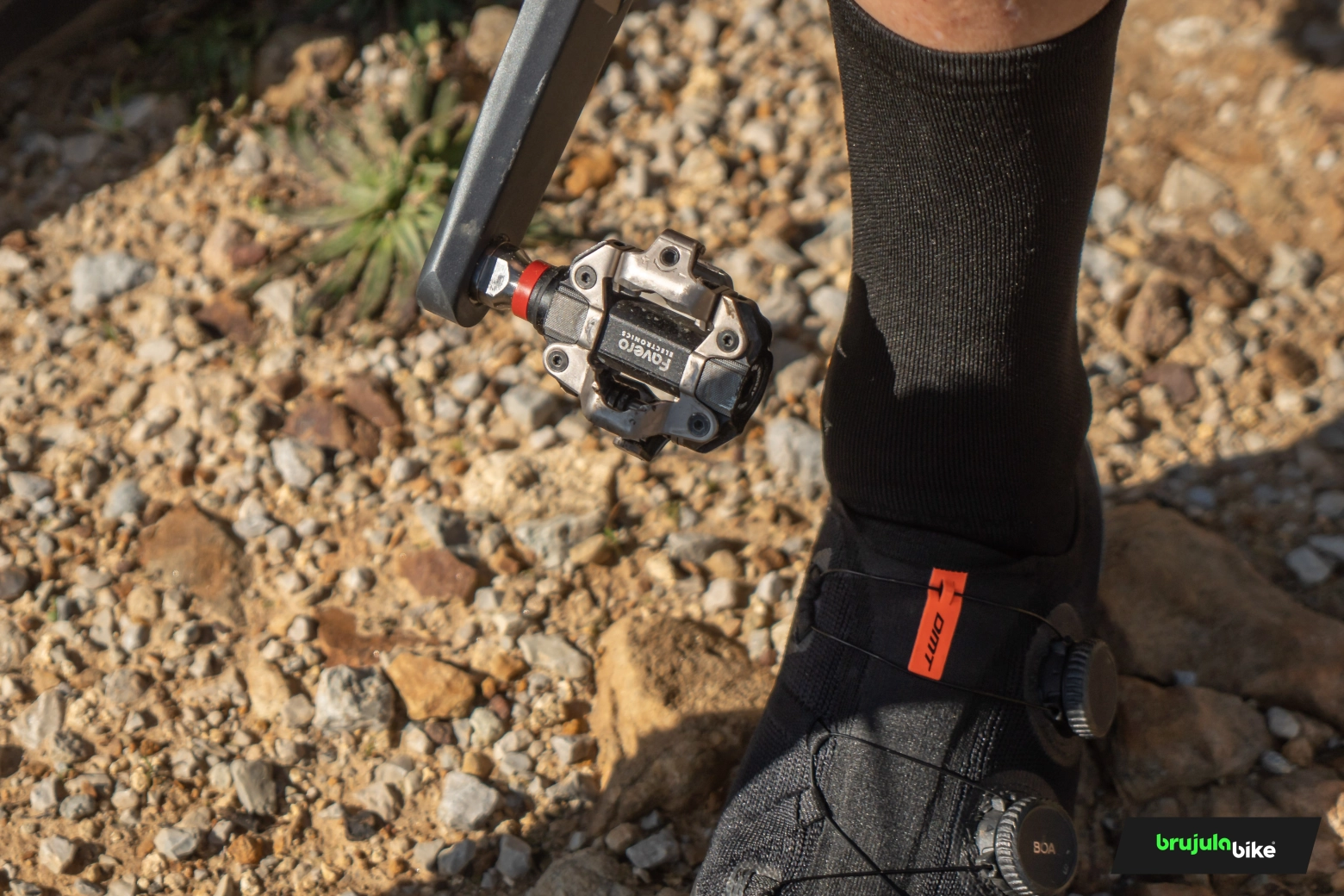
But in addition to this data, the Favero records other really interesting data, such as pedaling dynamics, that is, the time we have pedaled standing, the power phase in our pedal stroke with each leg (which we see in a graph that gives us a visual information of the phases of the movement where we exert force with each leg and we see possible imbalances). It also visually shows us the deviation in our support compared to the center of the pedal, so if there are asymmetries in this regard, we can see them too.
Regarding battery life, after the first charge, we used the pedals for about 35 hours, and the app shows that we have about 40% remaining, so we estimate that the total duration will be quite close to those advertised 60 hours.
Conclusions
Our experience with the Favero Assioma PRO MX-2 has been really good. We cannot highlight negative aspects beyond the weight increase that any power meter we use implies, and in the case of this type of meter, the fear of a possible impact that could damage it, although as we mentioned, its electronics are well protected inside the axle and its body looks really robust. In addition, Favero supplies the pedal body separately at a price of 59.29€, so if it suffers any damage, it is easily reparable.
The price of the Favero Assioma PRO MX-2 is 742.87€, a considerable amount but, when compared to the competition, it is one of the most interesting options. However, for users who do not see the need for a dual sensor, they can opt for the Assioma PRO MX-2 Pro MX-1, which with a sensor on the left pedal offers the most important data, and if there is not a considerable asymmetry in our pedaling, it is more than enough to monitor our training. The Assioma PRO MX-2 Pro MX-1 cost 445.28€.